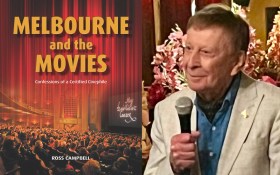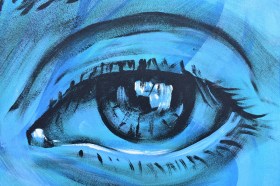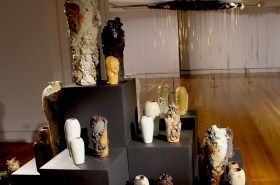The most optimistic and creative piece of public policy in the arts sector this year came not from government but from the philanthropic sector.
In December, three philanthropic organisations announced they will join forces to support an independent body promoting the value of the arts. The $1.65 million initiative from the Myer Foundation, the Tim Fairfax Family Foundation and the Keir Foundation is an acknowledgement of the importance of the arts to Australian society and the need for public promotion and support of a vibrant arts sector. The yet-to-be named initiative fills an important gap and hopefully will alleviate the situation where the only people advocating for the importance of the arts to society are artists, who always risk being accused of self-interest.
Read: New independent think tank for the arts
Lest there still be doubters as to the importance of this support of the arts to the community at large, the year brought yet more evidence. Particularly important was the landmark study which measured a ‘healthy dose’ of the arts, a rigorous piece of research which offered conclusive evidence that people who engage in at least two hours of arts activity a week are mentally healthier.
Read: Landmark study measures healthy dose of the arts
But despite a global rise in depression and suicide rates, there seems little understanding of the value of the arts as a preventative to mental illness, or perhaps simply little willingness to make the necessary investment by Australian governments.
On a global level there was at least some cause for optimism, with Canada’s rock star Prime Minister Justin Trudeau doubling the budget of Canada Council – the equivalent of the Australia Council – as part of an injection of $1.9 billion into arts and culture over five years.
Read: O Canada, why can’t we be like you
In Australia, meanwhile, arts funding laboured under the cuts of the 2014 budget and the massive diversion of funds from the Australia Council to Catalyst announced in 2015. While much of 2015 was spent fighting this decision and hoping for change (with partial success, when a portion of the money was returned to the Australia Council), 2016 was the year of buckling down and dealing with the new reality.
The Australia Council waited until May, perhaps hoping for the reprieve that did not come in the 2016 budget, then announced the long-awaited and feared new round of four-year operational funding. More than a third of the 147 previously-funded organisations lost their operational funding on what became known as Black Friday. Twelve chose not to reapply for this funding round. Eighty-two received funding, 53 applied and were refused.
Read: 65 arts organisations lose Australia Council funding
The Australia Council, under enormous pressure with its reduced budget, made the interesting decision to fund 43 new organisations, meaning a third of those who received multi-year operational funding did so for the first time. This was great news for some adventurous emerging organisations, particularly in the Indigenous sector.
But it begs questions about an attention-deficit disordered policy environment which is always looking for something new and never providing the sustainability required to enable arts organisations to be more creatively adventurous.
Read: Who are the new guard?
And speaking of begging questions, the entire value of the Catalyst enterprise was exposed as pretty much meaningless when the Ministry distributed the $12 million taken from the Australia Council in May. The list of funded organisations closely replicated the organisations that would have got money from the Australia Council had the separate structure not been established. After all the angst that small organisations would miss out, that heritage arts would be favoured or that moving away from independent peer review would mean politically active organisations would be penalised, the main fault of Catalyst turns out to be that it has duplicated a cost structure while doing nothing differently from that which the Australia Council would have done anyway.
Minister for the Arts Senator Mitch Fifield has been painted into a corner. He apparently feels he cannot be seen to dismantle the structure set up by his predecessor Senator George Brandis but clearly (thank heavens) has no desire to use it for the kinds of political purposes that Brandis might have done.
Read: Who got the Catalyst money?
There was a whiff of pork barrelling around the first couple of Catalyst announcements, slipped out early in key electorates but that fear settled down once the full list was announced and it was clear that small-to-medium companies across regions, art forms and electorates had been treated fairly.
Read: Another Catalyst grant…and it smells like pork
The pre-election issue that was never resolved satisfactorily, however, was the additional almost $12 million of Catalyst money that was distributed hours before the Government went into caretaker mode ahead of the election. Though nobody has ever admitted it, it is now clear that in the last hours the 44th Parliament, the Government spent not only the 2016 Catalyst allocation but also a significant chunk of forward allocations – the equivalent of the entire 2017 Catalyst budget – binding a future government in a way which is counter to the spirit, if not the letter, of the caretaker principles of a government going to the polls. In the event, of course, the same party and the same Minister were returned so the matter was easily swept under the carpet. But it should not have happened and was widely decried by arts leaders as evidence of the continuing problems with the Catalyst structure.
Read: Government spends $12 m in mysterious Catalyst windfall
The election came and went with little attention to arts or cultural policy. The newly formed Arts Party contested its first election with an extensive and creative platform but garnered little attention. #AusVotesArts made a small impact on social media but did not break outside the sector. Labour and the Greens proposed some valuable initiatives that passed without a trace. The Liberals did not even bother with the pretence of an arts policy.
Read: Coalition fails to deliver arts policy
Meanwhile the wheels of government continued to turn on policies that have far reaching effects for the sector. The Minister for Education Simon Birmingham cut the number of arts-related courses eligible for VET funding from 70 to 13 as part of a massive slash to the funding of private tertiary education colleges and infuriated the sector with his contention that studying creative arts was not a career pathway but a ‘lifestyle’ choice.
Read: Arts education cuts leave sector fuming
Copyright and competition policy, an issue that has been churning through the slow processes of law reform and various commissions for several years now, moved on in a direction which upset significant sector players. The Government was quick to quash the Productivity Commission’s proposal that copyright be reduced from 70 years after the author’s death to 10 or 15 years post publication – a ludicrous suggestion that showed little awareness of the context. But other proposals that will open up copyright have been retained in the final draft of the Productivity Commission report released this week. Australian publishers are losing the fight to retain parallel import restrictions, which protect them again competing directly with cheaper imports and copyright holders are also concerned about the move to replace current copyright laws with a broader ‘fair use’ provision.
Read: Good for lawyers, bad for creators
At State level, there was a scattering of interesting creative policy-making. Victoria introduced its new creative industries policy with $115 million investment and 40 promises concentrated on growing capacity and reaping social dividends. NSW moved forward with its innovative arts, health and ageing policy, announced last year. South Australia survived a threat to arts funding with the SA Government reversing $15 million of proposed cuts, and in WA an integrated and long-term arts and culture strategy was released: Strategic Directions 2016-2031.
Read: 40 ways the arts will improve with $115 million in new funds
New capital announcements include a home for Bell Shakespeare as part of Sydney’s Walsh Bay creative precinct redevelopment, the development of Macquarie Point by MONA in Hobart, and the upgrade of Her Majesty’s in Adelaide.
Read more year end wraps:
The biggest list: what made an impact in the visual arts
Encore: the performing arts in 2016





